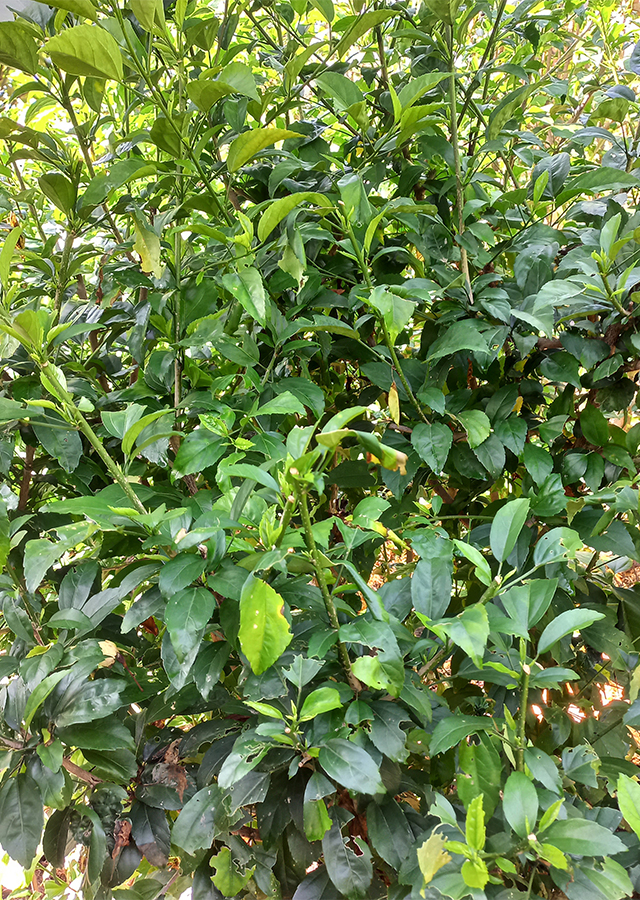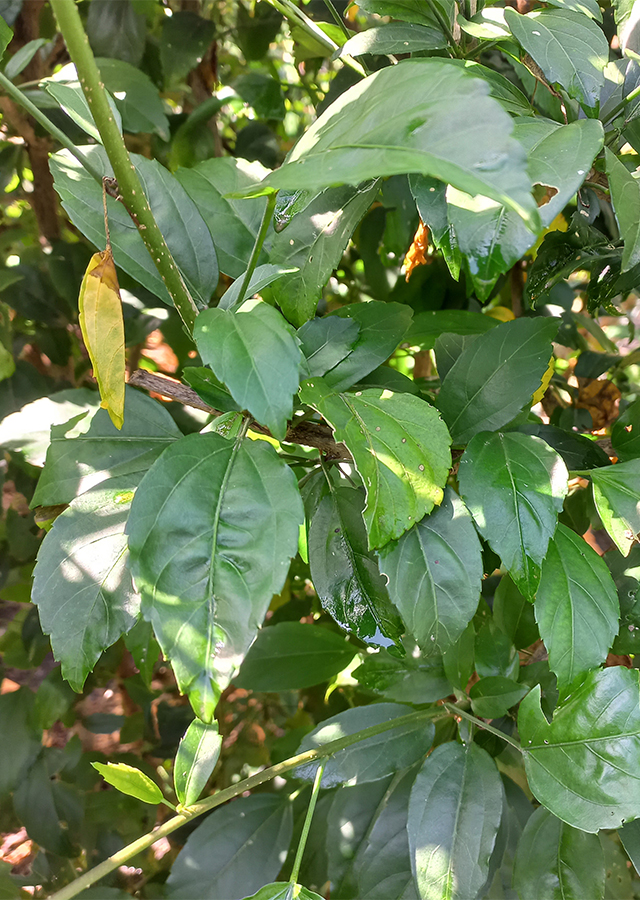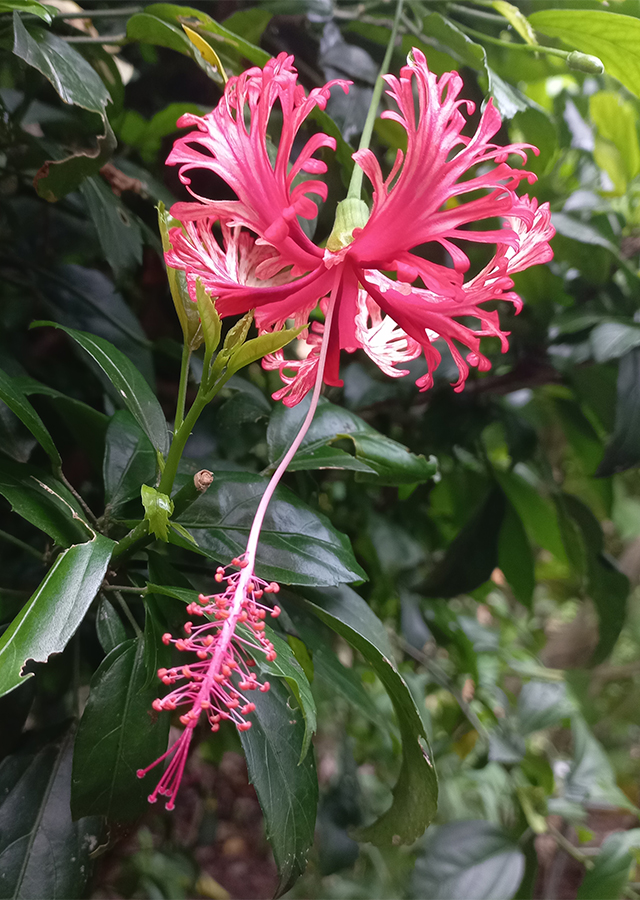Fringed Hibiscus
Hibiscus schizopetalus (Mast.) Hook.f.
Malvaceae
Location in our garden
Principal



Synonym
Hibiscus rosa-sinensis var. schizopetalus (Mast.) Dyer
Hibiscus fauriei H.Lév.
Hibiscus rosa-sinensis f. schizopetalus Mast.
Habitus
Shrubs. An evergreen perennial shrub, growing about 2-4 m tall.
Part Used
Leaves
Growing Requirements
Full Sunshine
Habitat
Roadside
Shrublands
Terrestrial
Overview
Hibiscus schizopetalus or fringed hibiscus is native to tropical east Africa, and widely cultivated, globally distributed to Asia (China, India, Pakistan, Taiwan), Africa (Kenya, Mozambique, Tanzania), North America, and South America. The specific epithet schizopetalus comes from schizo meaning "split" and petalus meaning "petal", in reference to the recurved and divided petals of each flower.
Vernacular Names
Juba kusum (Manipuri-India).
Agroecology
Hibiscus is a versatile and hardy plant that grows well in a variety of conditions, including temperate, tropical, and subtropical climates. Best grown in rich, moist, well-drained soils in full sun. Plants appreciate abundant watering and fertilizing when young. Plants are intolerant of drought.
Morphology
- Roots - taproot system.
- Stems - woody, branches densely or sparsely pubescent or tomentose with simple, scarbid or stellate hairs or glabrous.
- Leaves - ovate, acuminate, serrate, stipules lanceolate, deciduous.
- Flowers - inflorescence solitary axillary, bisexual, epicalyx is absent, calyx of 5 petals recurved and much divided or laciniate and flowers pendulous,staminal tube very long, ovary superior, 5-celled, style long, passes through the hollow staminal tube and divides into 5 branches with capitate stigmas.
- Fruits - capsules, about 3.5-4 cm across, globose-cylindrical, apex apiculate, acute or acuminate, dehiscing loculicidally, glabrous or hairy.
- Seeds - many, reniform or subglobose, smooth, glabrous or hairy, about 2-3 mm across, dark brown.
Cultivation
Propagated by seed (generative propagation), and by stem cutting (vegetative propagation).
Chemical Constituents
Anthocyanins, alkaloids, triterpene esters, phenolic acids, flavonoids, phenylpropanoids, and sterols.
Traditional Medicinal Uses
- It has pharmacological properties of antioxidant, antipyretic, anti-inflammatory, analgesic, hypoglycaemic and hypolipidemic activities.
- Hibiscus is used as an herbal remedy for various conditions that include fever, high blood pressure, bacterial infections, poor circulation, and heartburn.
Part Used
Reference Sources
- EFlora of Gandhinagar. Hibiscus schizopetalus. https://www.efloraofgandhinagar.in/shrub/hibiscus-schizopetalus.04-10-2021.
- Eflora of India. (2007). Database of Plants of Indian Subcontinent: Hibiscus schizopetalus. https://sites.google.com/site/efloraofindia/species/m---z/m/malvaceae/hibiscus/hibiscus-schizopetalus. 04-10-2021.
- India Biodiversity. (2014). India Biodiversity Portal: Hibiscus schizopetalus (Dyer.) Hook. f. https://indiabiodiversity.org/species/show/229934. 04-10-2021.
- Missouri Botanical Garden. (No date). Hibiscus schizopetalus. https://www.missouribotanicalgarden.org/PlantFinder/PlantFinderDetails.aspx?taxonid=282592. 04-10-2021.
- National Park of Singaore. (2020). Flora & Fauna Web: Hibiscus schizopetalus. https://www.nparks.gov.sg/florafaunaweb/flora/2/0/2097. 04-10-2021.
- Wong, S.K.,Chan, E.W.C.,H T Chan, H.T. (2016). A Review on the Phytochemistry and Pharmacology of Two Lesserknown Hibiscus species: H. taiwanensis and H. schizopetalus. International Journal of Pharmacognosy and Phytochemical Research, 8(8); (pg. 1341-1346.
